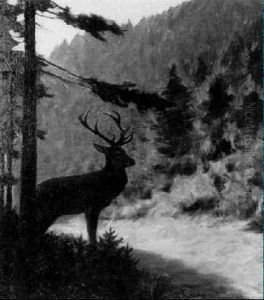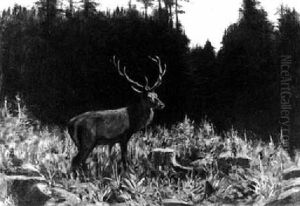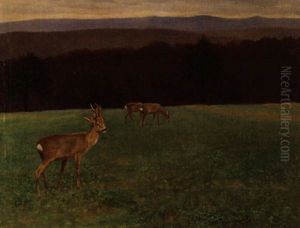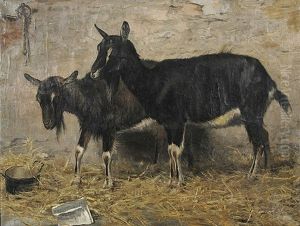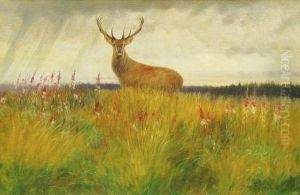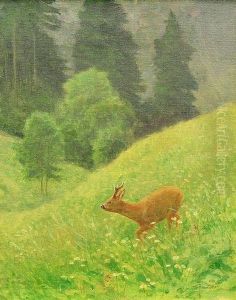Otto Fikentscher Paintings
Otto Fikentscher was a German painter associated with the Düsseldorf school of painting, which was a group of artists who studied and worked at the Düsseldorf Academy of Arts in the 19th and early 20th centuries. Born on June 8, 1862, in Zwickau, Saxony, Fikentscher was influenced by the artistic environment of his time, which included a strong focus on academic painting and naturalism.
Fikentscher received his artistic training at the Royal Art Academy in Munich, where he was influenced by the works of Wilhelm Leibl and Franz von Lenbach, significant figures in German art who advocated for a realistic portrayal of subjects. Over time, Fikentscher developed his style that combined a naturalistic approach with a sensitivity to light and color, which became characteristic of his work.
During his lifetime, Fikentscher was known for his genre scenes, portraits, and still-life paintings. His works often reflected the everyday life of people, capturing moments of simple, rural existence with a gentle, empathetic eye. He had a keen interest in depicting the lives of peasants and rural communities, which was a common subject among artists of the Düsseldorf school.
Fikentscher's career spanned several decades, during which he exhibited his works at various venues, including art exhibitions and galleries. His contributions to German art were recognized during his lifetime, and his paintings were collected by art enthusiasts and institutions alike.
Otto Fikentscher passed away on August 19, 1945, in Zwickau. Although not as widely remembered today as some of his contemporaries, his work remains an example of the naturalistic and genre painting traditions of late 19th-century Germany. He left behind a body of work that continues to be appreciated by art historians and collectors for its technical skill and its charming, often idyllic, portrayal of rural life.



